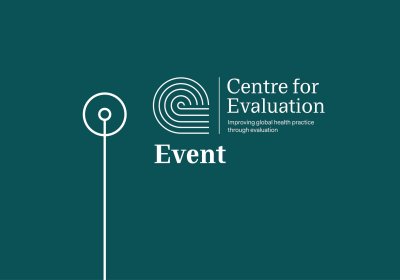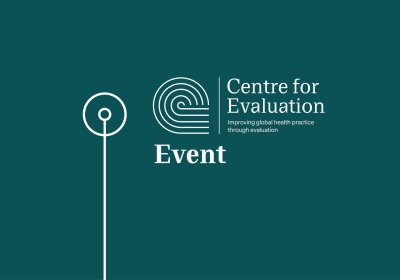SAMATA and SAMVEDANA PLUS Protocol Workshop
An hour-long ‘protocol workshop’ to discuss the Samata and Samvedana Plus analysis plans with Tara Beatie and Lucy Platt, who are leading the LSHTM support for the projects. These are both cluster-randomised controlled trials in India. Co-investigators from India will join by Skype.
- SAMATA: Supporting adolescent girls to stay in school, reduce child marriage and prevent entry into sex work
Background. Lower caste adolescent girls living in rural northern Karnataka, south India are at increased risk of school drop-out, child marriage, and entry into sex-work, which enhances their vulnerability to HIV, early pregnancy and adverse maternal and child health outcomes. The Samata intervention is a comprehensive, multi-level intervention designed to address these structural drivers of HIV risk and vulnerability. Samata works with key stakeholders (lower caste adolescent girls and their families; adolescent boys; village communities; schools; policy makers), to change social norms regarding gender, child marriage and girls’ education, and to link lower caste families to government schemes that provide scholarships, bicycles and other incentives to support girls’ retention in school.
The overall aim of SAMATA is to reduce child marriage, prevent child entry into sex work, and increase secondary school entry and completion among lower caste adolescent girls. The intervention consists of: (i) tracking adolescent girls school attendance, providing tutoring to girls who have fallen behind with their studies and creating girls groups for girls to meet and receive life skills and leadership training; (ii) meeting with families of lower caste girls to discuss girls education, marriage and gender socialisation and linking families to government financial incentives for educating girls; (iii) delivering ‘Parivartan’ to adolescent boys in villages – a sports based, life-skills and empowerment programme which challenges gender norms and attitudes; (iv) working with communities to challenge ideas around girls education and marriage, through community meetings and street theatre; (v) working with schools to track girl school attendance, develop leadership and career counselling for girls, conduct gender analyses of the school environment and develop school safety policies which are ‘girl friendly’; and (vi) advocating with local and state government to support the project and replicate key strategies.
Study design: Evaluation of the Samata intervention is through a cluster randomised controlled trial, conducted in eighty village clusters (40 intervention; 40 control) in two districts in north Karnataka. All lower caste (scheduled caste/tribe) adolescent girls attending 7th standard (final year of primary school) were recruited into the study in two consecutive waves, one year apart. Girls (n=2275), their families (n=2275) and school teachers (n=650) were interviewed at baseline (April 2014 and July 2014) and at endline (June 2016 and June 2017). The study is designed to assess four primary outcomes: the proportion of lower caste girls who (i) enter into secondary school; (ii) complete secondary school; (iii) marry before age 15; and (iv) engage in sex before age 15. The evaluation will use an adjusted, cluster-level intention to treat analysis, comparing outcomes in intervention and control villages at follow-up. We will also conduct survival analyses for the following secondary outcomes: marriage, sexual debut, pregnancy and entry into sex work. The evaluation design will involve quantitative assessments with adolescent girls, their families and school teachers, qualitative assessments with adolescent girls and adolescent boys, and process and implementation monitoring.
- SAMVEDANA PLUS: Reducing violence and increasing condom use in the intimate partnerships of female sex workers
Background: Female sex workers are at increased risk of HIV and STIs compared to women in the general population, and frequently experience violence in their working and domestic lives from a variety of perpetrators, which can enhance this risk. While progress has been made in addressing violence by police and clients, little work has been done to understand and prevent violence by intimate partners (IPs) among sex worker populations. Samvedana Plus is a multi-level intervention programme that works with sex workers, their IPs, the sex worker community, and the general population to address intimate partner violence.
The overall aim of SAMVEDANA PLUS is to reduce violence and increase consistent condom use within these ‘intimate’ relationships. The intervention consists of: (i) couples counselling sessions between sex workers and their intimate partners; (ii) separate group work among sex workers and intimate partners to increase self-esteem and encourage reflection about violence; (iii) strengthening supportive crisis management systems that address domestic and sex worker violence; (iv) training male ‘champions’ to encourage action against violence; and (v) training media to promote informed discussions about violence and HIV risk. The program involves changing perceptions on acceptability of physical violence as a form of discipline, challenging assumptions that give men authority over women, and working with men and women to encourage new relationship models based on equality and respect.
Study design: Evaluation of the Samvedana Plus intervention has been through a cluster randomized controlled trial conducted with ~650 female sex workers and their IPs living in 47 villages in Bagalkot district, northern Karnataka. 50% of the village clusters (n=24) were randomly selected to receive the intervention for the first 24 months and the remaining 50% (n=23) will receive the intervention thereafter. The study has been designed to assess two primary outcomes: the proportion of female sex workers who report: (i) physical or sexual partner violence; and (ii) consistent condom use in their intimate relationship, within the past 6 months. The evaluation will use an adjusted, cluster-level intention to treat analysis, comparing outcomes in intervention and control villages at midline (12 months (September 2016)) and endline (24 months (September 2017)). The evaluation design will involve quantitative assessments with all sex workers who report an IP and qualitative assessments with sex workers and IPs, as well as and process and implementation monitoring.


